 |
More!- Miscellaneous Snippets - |
 |
1: Water balance coal mine haulage |
|
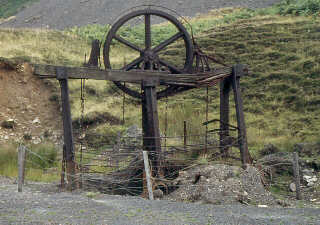 Cwmbyrgwm Water Balance Pit. NGR SO 251033. Abersychan, Gwent. |
In the early 19th century, water balance was a common method of coal mine haulage, but by the early 1970s, when this photograph was taken, this was the only example still in situ. The only requirements for water balance haulage were a good surface supply of water and an drainage adit at the bottom of the shaft. The equipment was simple and consisted of a wheel with a brake band and two water tanks on the ends of the haulage rope. Each water tank had a mushroom shaped valve at the bottom and a framework at the top to hold a mine waggon. To operate the system, a waggon was run onto the (empty) tank at the shaft bottom, the upper tank was filled with water and the brake band released. When the full water tank reached the bottom of the shaft, the mushroom valve was pushed up and the tank emptied. Hopefully, by then, the brake had been applied at the top. |
2: Coal mining, Meghalaya, India |
|
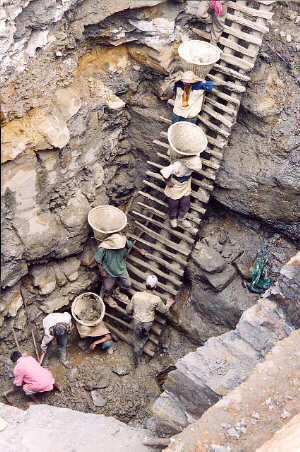 Coal mine haulage, Meghalaya, India ( Annie Audsley ) |
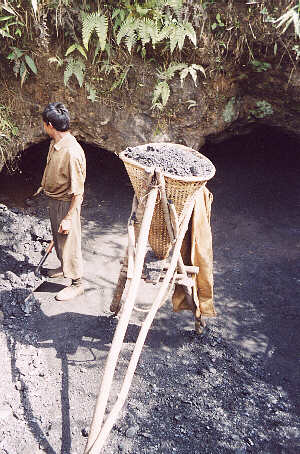 Coal basket and frame, Meghalaya, India ( Annie Audsley ) |
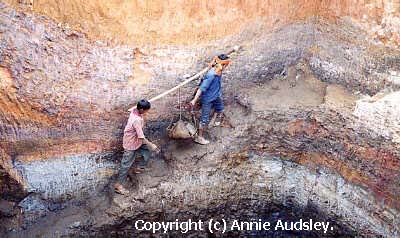 Coal mine haulage, Meghalaya, India ( Annie Audsley ) |
|
3: Haytor granite tramway, Devon |
|
The Haytor tramway is unusual in that the rails are made of stone. The tramway was opened in 1820 to carry granite from the quarries at Haytor to the Stover canal at Ventiford, a distance of 8½ miles with a fall of 1300 ft. It was constructed to the order of George Templar, who had obtained a contract to supply building stone for the new London Bridge. The tramway rails are made from granite blocks, carved to provide a flange for the iron shod wheels of the horse-drawn carts and laid a a gauge of 4ft 1in (or about 1¼metres if you speak in metric). Incredibly, the engineer of the tramway also managed to construct sets of stone points to connect to various branch lines on the route. The line became disused in the 1850s. |
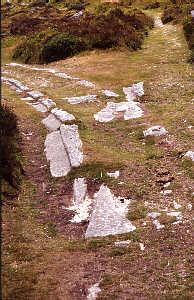 A section of tramway, showing the flange cut into the granite blocks |
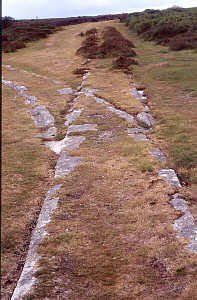 Stone points on the tramway |
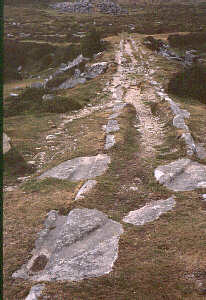 Detail of the points |
4: Coal mine haulage by electric locomotive |
|
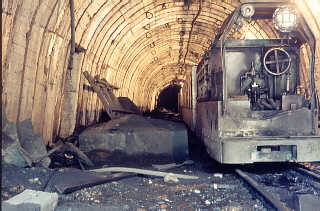 Underground loco haulage Hafodyrynys, South Wales Coalfield. |
A battery electric haulage locomotive in the concrete lined drift of Hafodyrynys mine. At the time this photograph was taken (early 1970s), the mine was not producing coal and the drift was only used for maintainance. |
 |
 |
Revised: